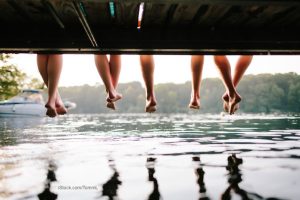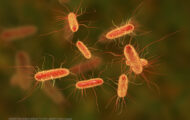Three cases of E. coli O157:H7 illness in Minnesotans linked to swimming in the Big Island area of Lake Minnetonka, according to the Minnesota Department of Health (MDH). All three cases of E. coli O157:H7 infection have the same DNA fingerprint. One person was hospitalized but has since recovered.
 The connection to Lake Minnetonka was found after investigators questioned those sickened. All of the cases reported swimming and boating on July 4, 2013, in the Big Island area of Lake Minnetonka. The image is courtesy the Star Tribune, and it shows how popular that area is with boaters.
The connection to Lake Minnetonka was found after investigators questioned those sickened. All of the cases reported swimming and boating on July 4, 2013, in the Big Island area of Lake Minnetonka. The image is courtesy the Star Tribune, and it shows how popular that area is with boaters.
The source of the E. coli in the water is unknown. However, lakes can be contaminated through multiple methods, including animal waste, individual septic systems or sewage spills, improper boat waste disposal or ill swimmers. People who swim when they are ill can easily contaminate the water – even if they don’t have a fecal accident.
“Swimming in Minnesota’s lakes is a very fun and healthy summertime activity, but it also can be a source of illness,” said Trisha Robinson, an epidemiologist specializing in waterborne diseases with the Minnesota Department of Health (MDH). “This is the first waterborne outbreak of the summer and illustrates why it is so important that people take steps to prevent infection. If swimmers can follow some basic precautions, hopefully we can prevent more outbreaks at other swimming locations.”
All public beaches on Lake Minnetonka remain open and have passed their regular water quality monitoring tests.
Swimmers at Minnesota beaches can take an active role in protecting themselves and other swimmers by following these simple steps: don’t swim when you have diarrhea; don’t swallow lake water; shower with soap before swimming; wash your hands well after using the toilet or changing diapers; take children on bathroom breaks and change diapers often; and don’t change diapers at beachside or wash out diapers in the lake.
Symptoms of E. coli O157:H7 illness typically include stomach cramps and diarrhea, often with bloody stools, but little or no fever. People typically become ill two to five days after swimming in contaminated water. Most people recover in five to 10 days. However, E. coli O157:H7 infection sometimes leads to a serious complication called hemolytic uremic syndrome (HUS), which can cause kidney failure and other severe problems, including death. HUS can occur a week or more after the onset of diarrhea. Those most at risk of developing complications from E. coli include the very young, the elderly and those with weakened immune systems.
E. coli O157:H7 infections should not be treated with antibiotics, which might promote the development of HUS, according to MDH.




